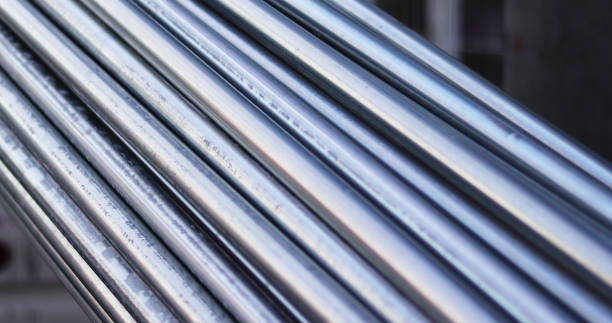Marketing
Is Titanium Alloy Mri Secure?

Other orthopedic issues including fractures and joint replacements, could require metal implants to hold the bone in position. However, there's a catch What if I could have an MRI immediately? Before we dive into the "Can I get an MRI with implanted metallic?" let's talk about what MRI is. This kind of exam, as the name implies, is related to "magnetic fields". It is to excite hydrogen protons within the human body with pulses that travel through various devices to make them resonate, and then receive these resonance signals through computer processing. This transforms the signals of different direction and parameter into pictures. All this seemingly simple work must be carried out in the presence of a magnetic field, and a very powerful one , at this point. Today, titanium alloy has become the most widely used implant metal due to its low weight, high corrosion resistance, good biocompatibility, no magnetic and other properties, are titanium alloy implants MRI safe?
While titanium bar implants are generally safe, there are questions regarding their safety MRI. First, titanium is a nonmagnetic material that means it is able to be scanned without creating magnetic fields. One concern is the possibility that metal objects are removed in MRI procedures. This is because titanium is not magnetic and can be scanned without creating magnetic fields. But, it's possible that other metals could pose a threat. This article addresses issues related to MRI safety artifacts, CT protocol, and reproducibility analysis. Read on to learn more about the titanium tool set safety as well as MRI scan safety for titanium implants.
Magnetic artifacts may cause artificial signal variations and distortions in the shape of objects in MRI images. They also cause huge susceptibility differences between the implant and its neighboring tissues. In the worst situations, these effects could cause serious damage to implanted ferromagnetic medical devices that could even be life-threatening. The chance of heat loss is lower when a patient is lying down, especially when they're lying on their backs. While the artifacts on titanium MRI images are not important in relation to their size, the more likely they will influence the clinical decision-making process. To limit the negative effects of these artifacts in metal specific sequences that reduce their impact have been developed. However, these techniques don't work as well on smaller artifacts, which aren't easily visible because of the soft tissue surrounding. These findings were based on studies of regular tetrahedron-shaped square cubic, and spherical titanium objects. The titanium materials were anisotropic and isotropic. The samples were put on a nickel doped agarose gelphantom. Then, they were covered with an hexahydrate of nickel nitrate. Three-Tela MR images of the samples were captured using a gradient echo sequence after they were placed on the phantom. The sample volume was calculated and subtracted from the background value to determine the amount of artifacts present in the sample. The volume of artifacts grew proportionally to the normalized projection area of the sample.
A CBCT and MRI protocol for titanium tubing implants was developed to analyze artifacts resulting from these materials. This study was intended to determine the artifact volume with respect to the size of the implant and to link these findings to exposure factors. The implants were embedded with ultrasound gel. Multiple settings were used to obtain MRI and CT images. The volume of artifacts was calculated in percentages of the implant's volume.MR images of pilons containing SS screws showed streaks. The streaks extended into the talar dome, and were thought to be distinct from the susceptibility to titanium artifacts. The other reason to support these findings was that the SS did not meet the requirements for MRI of a pilon. Furthermore, the SS was of lower contrast to MRI to assess the reduction in articular area of the pilon.
Reproducibility analysis of MRI using titanium alloy is a crucial component in understanding these images. The volume of the titanium alloy mesh implants could vary significantly from one image. The volume content of titanium mesh implants particularly can be erratic which makes a visual examination of attenuation maps necessary to detect signal voids. With a single-slice titanium alloy scanner researchers examined a variety of titanium alloy MRI images to assess if the MRI image quality was affected and whether the method was able to overcome any limitations.
Researchers utilized three titanium phantoms for drilling three trepanation holes within the course of a single research. The implants are MRI-conditional with a maximum of 3.0 Tesla and have been proven to reduce the accuracy of MR images. Susceptibility artifacts caused by implanted metals can be on the order of 5 mm on a T1 MPRAGE. Due to the signal void and the lack of signal void, the authors decided to exclude one repeated examination from both group and individual analysis. The titanium tubing employed in MRI tools have minimal interference with the magnetic field of the MRI. However, there are drawbacks that should be taken into consideration before making a decision on their application. MRI machines that contain titanium or magnetic materials may not work properly. Patients who have implants that contain these materials should be scrutinized prior to going through an MRI. Titanium alloys are less likely to create distortion in images. Furthermore the alloys used in MRI are stronger than other materials.
Implants for orthopedics, particularly those for the spine, are typically made of titanium or titanium. Titanium isn't subject to magnetic fields, and it does not move within the same way as titanium does. Therefore, patients who have titanium implants are safe to undergo MMRI, however, they may or may interfere with the MRI image. Patients with spinal disorders or internal fixation of the spinal column might be able to benefit from this info.
Post je objavljen 28.07.2022. u 12:54 sati.